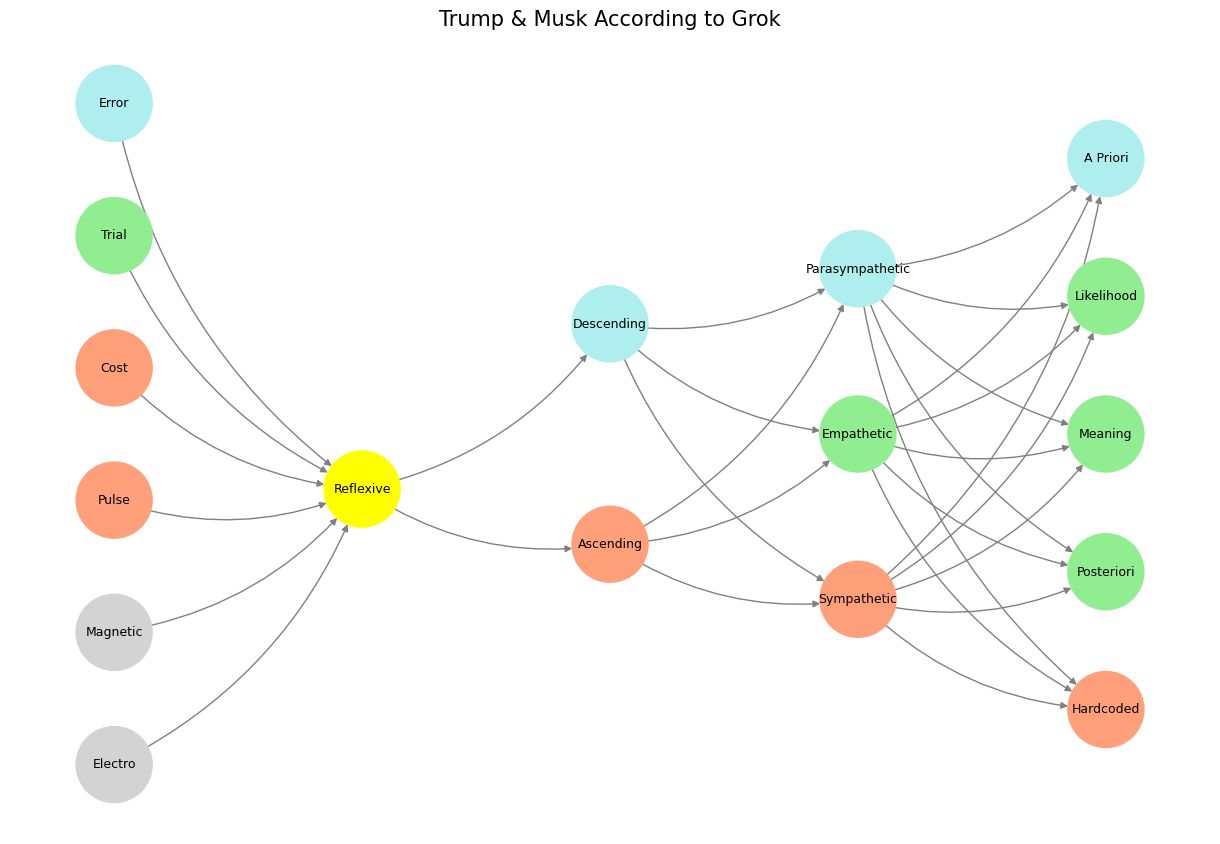Transvaluation#
The Ecological Loss Function: Art’s Inseparable Pulse#
There is an irreducible quality to great art, an inextricable pulse that binds its life to the medium in which it exists. Literature, music, painting, sculpture—each belongs to its own ecology, and any attempt to translate one fully into another enacts a loss that is not just aesthetic but structural, a failure encoded into the very attempt. This phenomenon can be christened the Ecological Loss Function: the recognition that the breath, the pulse, the life in a work of art is inseparable from the aspects of the cosmos and planet that it perceives. To shift from one form to another is not merely a change in medium; it is an ecological disruption, a severing of the work from its native environment.
Consider music. No novel, not even one written by Shakespeare himself, could encapsulate the experience of Bach’s Art of Fugue or Mozart’s Jupiter Symphony. Their works are not merely sequences of notes but living architectures of time, space, and motion, constructs that demand the ear and body rather than the mind alone. The moment a novelist attempts to describe them, what was once an embodied and unfolding reality is flattened into the frozen abstraction of words. A novel about music can comment on it, can frame it, can sketch its echoes—but it cannot be music. Similarly, a painting about Beethoven, a musical about Shakespeare, or a novel about Michelangelo’s David commits the same category error. The work exists within an ecosystem, one where the material—whether stone, sound, word, or pigment—is not incidental but integral to its meaning.
Fig. 19 What Exactly is Identity. A node may represent goats (in general) and another sheep (in general). But the identity of any specific animal (not its species) is a network. For this reason we might have a “black sheep”, distinct in certain ways – perhaps more like a goat than other sheep. But that’s all dull stuff. Mistaken identity is often the fuel of comedy, usually when the adversarial is mistaken for the cooperative or even the transactional.#
The Ecological Loss Function is not merely a theoretical abstraction but an observable reality in artistic adaptation. Film adaptations of literature often suffer from the misconception that images can stand in for text, that the cinematographer’s lens can replace the novelist’s language. But when the words are the substance, when the rhythm of prose is itself an artistic object, the loss is immediate and profound. The descriptive power of an English narrator in The Razor’s Edge cannot be substituted with mere imagery. The result is akin to transplanting an ancient tree into foreign soil—something may survive, but it is not the same organism.
This principle extends to more than just adaptation; it is embedded in how art itself functions. The work of a great painter like Raphael or a sculptor like Michelangelo does not merely depict reality—it absorbs, transforms, and refracts it through its own material reality. To write a novel about Michelangelo’s frescoes is to bypass their essential qualities: scale, texture, spatial interplay, the way light interacts with pigment on plaster. To compose music about Raphael’s School of Athens is to reduce its compression of philosophical thought into an abstraction rather than an experience. Each medium has its own cadence, its own pulse, its own demands. The Ecological Loss Function thus recognizes that the displacement of art from its natural environment does not merely change it—it diminishes it.
One might object that some great art does survive translation, but the exceptions only confirm the rule. Shakespeare, whose works were always written for the spoken voice, sometimes finds true expression in film or theater, when the director understands that Shakespearean language itself must remain sovereign. Kenneth Branagh’s Hamlet and Henry V succeed because they do not replace the words with visuals but orchestrate the visuals around the words, preserving the work’s essential nature. Patrick Stewart’s Macbeth achieves something similar, not through grand spectacle but through a deep excavation of the linguistic pulse that defines the play. But such success stories are rare. More often, what is lost in translation is not just fidelity but life itself.
From a structural perspective, this loss can be understood in terms of an information network. Each artistic form exists as a self-sustaining system, a neural network of layered meaning where input, compression, and output form a cohesive whole. The Ecological Loss Function describes what happens when this network is forcibly reconfigured. In neural terms, it is the equivalent of stripping a process of its cadence—the way sympathetic, empathetic, and parasympathetic interactions create a dynamic system. When the pulse of one medium is mapped onto another without recalibration, the cost is not just an inefficiency but a fundamental breakdown in meaning. A novel that relies on prose rhythm cannot function as a painting. A sculpture that derives its power from tactile space cannot be translated into melody.
This is why the great works of art, in any medium, do not merely describe their subject but become it. Shakespeare’s Hamlet is not about indecision—it enacts it in the very movement of its soliloquies. Beethoven’s Eroica is not about revolution—it is revolution, encoded into harmonic and rhythmic form. Michelangelo’s David is not about heroism—it embodies heroism in the tension of marble muscle, the latent kinetic force within stone. To attempt to shift these works into another form is to sever them from the very conditions that sustain their life. The Ecological Loss Function is a warning: that in the act of translation, the fragile equilibrium that sustains an artwork may collapse, leaving behind only an echo, a shadow, a pulse that no longer beats.
Show code cell source
import numpy as np
import matplotlib.pyplot as plt
import networkx as nx
# Define the neural network fractal
def define_layers():
return {
'World': ['Electro', 'Magnetic', 'Pulse', 'Cost', 'Trial', 'Error', ], # Veni; 95/5
'Mode': ['Reflexive'], # Vidi; 80/20
'Agent': ['Ascending', 'Descending'], # Vici; Veni; 51/49
'Space': ['Sympathetic', 'Empathetic', 'Parasympathetic'], # Vidi; 20/80
'Time': ['Hardcoded', 'Posteriori', 'Meaning', 'Likelihood', 'A Priori'] # Vici; 5/95
}
# Assign colors to nodes
def assign_colors():
color_map = {
'yellow': ['Reflexive'],
'paleturquoise': ['Error', 'Descending', 'Parasympathetic', 'A Priori'],
'lightgreen': ['Trial', 'Empathetic', 'Likelihood', 'Meaning', 'Posteriori'],
'lightsalmon': [
'Pulse', 'Cost', 'Ascending',
'Sympathetic', 'Hardcoded'
],
}
return {node: color for color, nodes in color_map.items() for node in nodes}
# Calculate positions for nodes
def calculate_positions(layer, x_offset):
y_positions = np.linspace(-len(layer) / 2, len(layer) / 2, len(layer))
return [(x_offset, y) for y in y_positions]
# Create and visualize the neural network graph
def visualize_nn():
layers = define_layers()
colors = assign_colors()
G = nx.DiGraph()
pos = {}
node_colors = []
# Add nodes and assign positions
for i, (layer_name, nodes) in enumerate(layers.items()):
positions = calculate_positions(nodes, x_offset=i * 2)
for node, position in zip(nodes, positions):
G.add_node(node, layer=layer_name)
pos[node] = position
node_colors.append(colors.get(node, 'lightgray'))
# Add edges (automated for consecutive layers)
layer_names = list(layers.keys())
for i in range(len(layer_names) - 1):
source_layer, target_layer = layer_names[i], layer_names[i + 1]
for source in layers[source_layer]:
for target in layers[target_layer]:
G.add_edge(source, target)
# Draw the graph
plt.figure(figsize=(12, 8))
nx.draw(
G, pos, with_labels=True, node_color=node_colors, edge_color='gray',
node_size=3000, font_size=9, connectionstyle="arc3,rad=0.2"
)
plt.title("Trump & Musk According to Grok", fontsize=15)
plt.show()
# Run the visualization
visualize_nn()

Fig. 20 Nvidia vs. Music. APIs between Nvidias CUDA & their clients (yellowstone node: G1 & G2) are here replaced by the ear-drum & vestibular apparatus. The chief enterprise in music is listening and responding (N1, N2, N3) as well as coordination and syncronization with others too (N4 & N5). Whether its classical or improvisational and participatory, a massive and infinite combinatorial landscape is available for composer, maestro, performer, audience. And who are we to say what exactly music optimizes?#

